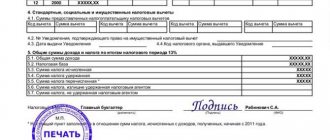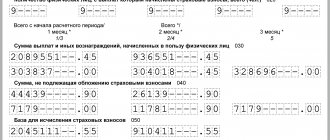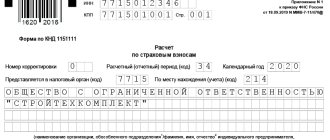Vacation pay is calculated taking into account bonuses accrued in the billing period. Incorrectly calculated upward payments lead to an unreasonable increase in the company's costs. Underpayment to an employee of the amounts required by law may lead to a conflict with him, with the involvement of regulatory and judicial authorities.
An accountant needs to pay attention not only to the amount of bonuses, but also to the nature of the payment: for what period was it accrued, is it issued regularly or one-time, for what were bonuses accrued, what is the wording of the manager’s order.
How to take bonuses into account when calculating average earnings ?
What payments are included in the calculation of vacation pay in 2020-2021?
According to the current labor legislation, each employee has the right to use annual leave (Article 114 of the Labor Code of the Russian Federation), which arises no earlier than 6 months after the start of work with a particular employer, which does not prevent its early provision (Article 122 of the Labor Code of the Russian Federation).
This leave time is subject to payment by the employer. The normal duration of vacation is 28 calendar days (Article 115 of the Labor Code of the Russian Federation), but it can be longer due to:
- additional leave given due to special working conditions (Articles 116–119, 348.10 of the Labor Code of the Russian Federation);
- non-working holidays falling within the vacation period (Article 120 of the Labor Code of the Russian Federation).
It is possible to split the vacation into several parts (Article 125 of the Labor Code of the Russian Federation), with each of them paid separately. If an employee quits without taking advantage of his right to annual leave, he is entitled to compensation for this (Article 127 of the Labor Code of the Russian Federation), the calculation of which is done according to the same rules as the calculation of regular vacation pay.
Payment for the period while on vacation is determined based on average earnings, the uniform general rules for calculating which are contained in Art. 139 Labor Code of the Russian Federation. The rules are as follows:
- The calculation of this earnings includes all payments provided for by the employer’s wage system, regardless of the source from which they are made.
- For the calculation, they take the actually accrued income and the actual work time for the 12 calendar months preceding the month of the event for which the average earnings are calculated. But the employer can approve a different period for calculation if this does not lead to a worsening of the employee’s situation.
- Average daily earnings are defined as the total amount of income for the calculation period (calculation period), divided by 12 months and by the average number of calendar days in a month (29.3).
- The responsibility for establishing the nuances of calculating average earnings is assigned to the Government of the Russian Federation.
Thus, bonuses included in the wage system (Article 129 of the Labor Code of the Russian Federation) are taken into account in income to calculate average earnings when calculating vacation pay. The list of bonuses taken into account in this system must be recorded in at least one of the following documents: (Article 135 of the Labor Code of the Russian Federation):
- contract of employment;
- wage regulations;
- regulations on incentives (bonuses);
- collective agreement.
For more information on the preparation of a document reflecting the remuneration system, read the article “Regulations on remuneration of employees - sample 2020-2021” .
What governs the process of including premiums in the calculation?
The provisions on the specifics of the procedure for calculating average wages, approved by Decree of the Government of the Russian Federation dated December 24, 2007 No. 922 (hereinafter referred to as Regulation No. 922), are devoted to the nuances that are important for calculating average earnings, and it is this that specifically talks about bonuses.
Prizes are mentioned in sub. “n” clause 2 of Regulation No. 922, which notes that these payments must be provided for by the current wage system. But the main points regarding bonuses are set out in paragraph 15 of Regulation No. 922. They prescribe bonus payments accrued:
- Monthly, take into account their actual amount, but not more than one for each month of the calculation period in relation to each of the bonus indicators.
- For a period of work of more than a month, include in the calculation in their actual amount in relation to each of the bonus indicators, if the period of their accrual is not longer than the duration of the calculation period, otherwise - in the amount corresponding to the monthly part of the bonus for each of the months constituting the calculation period.
- For the year preceding the event with which the calculation is associated, take into account their actual amount, regardless of when this payment is actually accrued.
We talk about other types of bonuses in the material “What types of bonuses and employee benefits are there?” .
The general rule for bonuses, established by clause 15 of regulation No. 922, is the need to take into account the amount of the bonus in proportion to the time actually worked in the calculation period, if this period has not been fully worked out or there are periods in it that are not subject to inclusion in the calculation (clause 5 of the regulation No. 922). This rule applies provided that at the time of calculating the bonus, the actual time worked was not taken into account. Bonuses that take into account the share of time worked usually (but not always) include those accrued over a certain period, for example, monthly, quarterly, annual.
The following periods are not subject to consideration when determining average daily earnings (clause 5 of Regulation No. 922):
- maintaining average earnings;
- being on sick leave;
- failure to perform work due to the fault of the employer or for reasons beyond the control of either party;
- use of additional days off intended for caring for disabled children;
- other paid or unpaid periods of release from work.
The proportion taking into account the share of time worked for the distribution of each bonus is calculated as the ratio of working days actually worked in the calculation period to the total number of working days included in this period (letter of the Ministry of Health and Social Development of the Russian Federation dated June 26, 2008 No. 2337-17).
Calculation example
Let the employee receive a bonus at the end of the year. It must be included in the calculation of average earnings when this employee needs to calculate vacation pay.
Formula: Pr.otp. = (Rdn / Rdn) * (Rdn - RdnI) , where:
- Pr.dep. — bonus included in the calculation of vacation pay;
- Pr.n. – accrued bonus at the end of the year;
- Rdn – amount of r. days in a year for which the bonus is accrued;
- RdnI – amount of r. days not included in the calculation.
There are 247 working days in 2021. The employee did not actually work the entire working period; according to the working time sheet, 41 days must be excluded. The bonus for the year was accrued in the amount of 60 thousand rubles.
We count. Pr.dep. = (60000 / 247) * (247 - 41) = 50039.46 rubles. This bonus amount must be taken into account when calculating vacation pay for an employee.
Main
- The calculation of payments for an employee's vacation includes bonus amounts according to the rules prescribed in Regulation No. 922 of 12/24/07.
- All bonuses included by the employer in the calculation are necessarily recorded by the company's LNA.
- From a legal point of view, including long-service bonuses for professional holidays in vacation pay costs is risky. By registering such an opportunity in the LNA, the company must be ready to prove the legality of including these amounts in expenses to the fiscal authorities.
What bonus rules are important for calculating holiday pay?
So, according to the rules stated above, the bonus should be taken into account when calculating vacation pay if it:
- taken into account in the wage system;
- named in the employer’s internal regulations reflecting the bonus procedure;
- accrued in the calculation period or must be taken into account (annual premium) in this period;
- cannot be regarded as a duplicate payment of the same frequency for a similar bonus indicator in the same period;
- recalculated in proportion to the share of time actually worked during the calculation period, if such recalculation is necessary in relation to it.
Of the duplicate payments, the current rules do not prevent the choice of the largest one. The rules for such a choice should be reflected in the internal regulations on bonuses.
The possibility of accepting bonuses in the calculation of average earnings in full or in part depends on three circumstances:
- whether the calculation period has been fully worked out;
- whether the entire period for calculating the premium is included in the calculation period;
- bonuses were calculated in proportion to the share of time worked or without taking this ratio into account.
What nuances of employee bonuses are important when calculating vacation compensation?
In accordance with the current rules, the bonus must be included in the general base for calculating vacation pay if it meets the following requirements:
- Its presence is provided for by the remuneration system that was established within a particular enterprise.
- Information about the availability of this award is formalized in a separate regulation that operates within the organization. This document should contain all the important information regarding the basic rules and features of employee bonuses.
- The bonus was accrued to the employee within the calculation period, which is used when determining the exact amount of vacation compensation.
If all of the above conditions are actually met, then the bonus payment must be taken into account when calculating vacation pay. As for other aspects of this procedure, it is all carried out in a standard manner with mandatory compliance with all basic rules. In particular, the allocated funds must be handed over to the employee on the last day of his stay in the organization, before the immediate start of the vacation period. The issuance method must match the payroll method. Funds can be given to the employee or, for example, transferred to his bank card.
It should be remembered that delays in accruing vacation pay are unacceptable on the part of the employer. Otherwise, the employee will be able to file formal complaints against his superiors. This may threaten the director with the subsequent application of various sanctions, including the imposition of a monetary penalty.
Accounting for monthly and quarterly bonuses
Depending on the combination of the three above circumstances, the following options for accounting for both monthly and quarterly bonuses are possible:
- The full amount of the premium will be taken into account if:
- the entire calculation period has been worked out, and neither the period for which the bonus was accrued nor the fact of accounting (non-accounting) of time worked when calculating it will matter;
- the entire calculation period has not been worked out, but the entire period for calculating the bonus falls within it and when calculating the bonus, the actual time worked is taken into account;
- falls entirely into the calculation, but when calculating the bonus, the actual time worked is not taken into account;
- does not fall into the calculated one or is included in it partially, while the fact of accounting (non-accounting) of time worked does not play a role when calculating the bonus.
For more information on calculating quarterly bonuses, see the article “Calculation of quarterly bonuses for actual hours worked .
The total number of bonuses accrued in relation to the same bonus indicator for the entire calculation period cannot exceed:
- for monthly – 12 units;
- quarterly - 4 units;
- semi-annual - 2 units (paragraph 3, clause 15 of regulation No. 922).
Examples of accounting for quarterly and monthly bonuses when calculating vacation pay are available in the ConsultantPlus system. Get trial access to the system for free and proceed to calculations.
Calculation examples
The principles for calculating monthly and quarterly bonuses are similar. Therefore, there is no need to consider each of these types of payments separately. The information provided below is for reference only.
Monthly bonus
Employee K. receives a bonus monthly. In August 2021, he goes on vacation for 28 days. The billing period coincides with the bonus period - from August 1, 2015 to July 31, 2021. There are no passes, K. did not take sick leave. Provided that K.’s monthly bonus is 10,000 rubles and his salary is 30,000 rubles, in 12 months he earned 480,000 rubles.
The amount of vacation pay will be approximately equal to: (480,000 ÷ 12 ÷ 29.4) × 28 = 38,095 rubles.
One-time quarterly bonus
Employee T. received a bonus for the fourth quarter of 2015. The payment of bonuses is stipulated in the company's regulatory documents. The billing period is from August 1, 2015 to July 31, 2021, vacation is 14 days. In January T. took sick leave.
Since the bonus period is included in the calculation period, when determining the amount of vacation pay, the accountant will fully take into account incentive payments. And with a salary of 30,000 rubles and 4 bonuses of 15,000 rubles each, he will receive: (420,000 ÷ 12 ÷ 29.4) × 14 = 16,666 rubles.
How is the annual bonus calculated?
The annual bonus is also included in the calculation, but there are special conditions for its accounting:
- it must relate to the year preceding the year of the event with which the calculation of average earnings is associated, i.e. if vacation pay is calculated in 2021, then the annual bonus for 2019 is taken into account;
- taking it into account is not linked to the actual time of accrual of this bonus, i.e. if at the time of calculating vacation pay the annual bonus has not yet been accrued and therefore cannot be taken into account in income, then after accrual of this bonus the average earnings will have to be recalculated and additional vacation pay will be paid to the employee (letter Rostruda dated 05/03/2007 No. 1253-6-1).
The options for taking the annual bonus into account are as follows:
- it is accepted in full if:
- the entire calculation period has been worked out (letter of Rostrud dated February 13, 2007 No. 317-6-1), while the fact of accounting (non-accounting) of time worked does not play a role when calculating bonuses;
- the calculation period has not been fully worked out, but the period for calculating the bonus absolutely corresponds to the calculation period and the bonus was accrued taking into account the actual time worked;
- absolutely corresponds to the calculated one, but the bonus was awarded without taking into account the actual time worked;
- does not correspond to the calculated one (letter of the Ministry of Health and Social Development of the Russian Federation dated 03/05/2008 No. 535-17), while the fact of accounting (non-accounting) of time worked does not play a role when calculating the bonus.
K+ experts have prepared an example of taking into account the annual bonus when calculating vacation pay. Get free trial access to the system and proceed to recommendations.
We talk about calculating the annual bonus in more detail in the article “How to calculate and account for the annual bonus?” .
One-time bonus payments
It was previously noted that one-time incentive payments are generally not included in the calculation of vacation payments. However, there are documents (for example, letter of the Ministry of Finance No. 03-03-06/1/150 dated 03/22/12, similar to an earlier period - the Ministry of Health and Social Development), according to which taking into account bonuses for an anniversary or professional holiday when calculating average earnings can take place if these payments are specified in the LNA, accrued in the calculation period and, most importantly, are part of the remuneration system.
In fact, whether or not to include bonuses for unearned services in vacation pay when calculating them is decided by the management of the company with full responsibility for this decision.
One-time, one-time bonus payments are usually not associated with a specific time interval. It may or may not coincide with the billing period. The specified bonuses accrued during the billing period are taken into account in full when calculating vacation pay.
However, if the accrual documents (order) indicate that the bonus was paid for work indicating the period, it must be taken into account in vacation pay as a bonus precisely for the period specified in the order. The period may be non-standard: six months, 2.3 or more years.
If the premium is accrued for a period of more than a year (it exceeds the billing period - 12 months), then it is distributed monthly. Further, the bonus is taken into account in full if the period is fully worked out. The billing period has been partially worked out - the bonus payment is included in proportion to the actual working time during the billing period.
Important! The “regular” bonus for half a year is taken into account in vacation pay according to the same rules as monthly and quarterly.
Premiums for periods throughout the year and annually
Annual bonus payments are included in the calculation of vacation payments if the accrual was for the year preceding the vacation (in 2018 - for 2021).
If it is provided for by the LNA, but for some reason the accrual has not yet taken place, then the vacation pay will have to be recalculated when the accrual occurs (Rostrud, letter No. 1253-6-1 dated 05/03/07).
It is necessary to take into account this nuance: if the billing period is fully worked out, the bonus is fully included in the vacation pay calculation formula. It does not matter in this case whether the time worked was taken into account when calculating. The billing period may not have been fully worked out, but the period for calculating bonuses corresponds to it absolutely, and the bonus was calculated taking into account the actual time worked. And in this case, the amount must be included in full.
There are situations in which the billing period has been partially worked out and the bonus is included in the calculation in proportion to the time worked in the billing period:
- The bonus accrual period fully corresponds to the calculated one, but the bonus was accrued without reference to the actual time worked.
- The accrual period does not apply to the calculation period. In this case, it does not matter whether working time was taken into account or not.
According to the above, annual and quarterly bonuses are also taken into account. So, if the billing period is partially worked out, in this case:
- hours worked were not taken into account; despite the fact that the bonus is fully included in the billing period, it is recalculated in proportion to the actual working time worked in the billing period;
- hours worked were taken into account; the premium is not included in the billing period (partially not included), it is recalculated in the same way, i.e. in proportion to the amount worked in the calculation period of the FW.
One-time and one-time bonuses: accounting features
One-time and one-time bonuses that meet the general necessary requirements for this type of payments (included in the remuneration system, recorded in internal regulations, accrued during the calculation period) are taken into account in the amount of income when calculating average earnings for vacation pay. In particular, it is possible to take into account in the calculation bonuses accrued for unearned achievements (for an anniversary or a holiday), if they meet these general requirements (letter of the Ministry of Finance of the Russian Federation dated March 22, 2012 No. 03-03-06/1/150, Ministry of Health and Social Development of the Russian Federation dated October 13, 2011 No. 22-2/377012-772).
One-time and one-time bonuses usually do not cover any period and therefore do not depend on the fact of coincidence or non-coincidence with the calculation period. In this case, they are confined only to the calculation period and, therefore, are taken into account in this calculation in full.
But if a one-time bonus is paid for the result of work carried out during a certain period, then when accounting for it, one must follow the rules in force for bonuses accrued for the corresponding period. However, for bonuses of this kind, the accrual periods may differ from the usual ones and may be, for example, six months or several years.
For semi-annual bonuses, the rules for taking into account will be similar to the rules applicable for monthly and quarterly bonuses. The difference will be that no more than two semi-annual bonuses can be included in the calculation period for the same bonus indicator.
If the premium is accrued for a period exceeding the value of the calculation period (1 year), then the rule will come into force that in each month of the calculation period it is necessary to take into account the amount of such premium in the amount attributable to its monthly part. Moreover, the premium amount determined in this way will be taken into account:
- in full if the entire calculation period has been completed;
- a volume proportional to the share of time actually worked in the calculation period, if this period is not fully worked.
How are lump sum payments for the holiday taken into account?
One-time cash incentives that are paid on various holidays and anniversaries are taken into account when calculating vacation pay if the following requirements are simultaneously met:
- Such bonuses are regulated by the system of monetary remuneration for personnel of a given employer.
- The incentive payment is accrued to the employee during the estimated time interval.
If the amount paid to an employee by the employer on a specific holiday does not relate to his labor (professional) activities at this enterprise, it does not need to be taken into account when calculating average earnings.
Consequences of errors in calculating premiums
Errors in accounting for bonuses when calculating average earnings are divided into 2 types according to their impact on the amount of income determined for the billing period:
- inflating this income and, accordingly, the amount of vacation pay;
- underestimating this income and, accordingly, leading to the accrual of vacation pay in a smaller amount.
Overstatement occurs when the following is included in the calculation of premiums:
- not included in the wage system;
- not reflected in internal regulations;
- accrued outside the calculation period or not related (if the premium is annual) to this period;
- duplicating each other in terms of bonuses at the same frequency;
- not recalculated in proportion to the share of time actually worked in the calculation period, if this had to be done.
An understatement occurs if income does not include any of the premiums accrued during the calculation period. In addition, both overestimation and underestimation may be associated with incorrect calculation of the bonus amount or its incorrect recalculation in proportion to the time actually worked in the calculation period.
In any case, identified errors require corrections, since:
- overstatement unlawfully increases labor costs included in the costs that reduce the profit base;
- understatement infringes on the rights of the employee.
It is quite easy to correct an underestimation of the amount: you need to recalculate and pay the employee the missing amount. Overstatement amounts due to a counting error can be withheld from the employee’s salary (Article 137 of the Labor Code of the Russian Federation). But overstated amounts that are not related to such an error and are essentially explained by the employer’s violation of the law when calculating average earnings are quite difficult to get back from the employee: he may not agree to voluntary deduction and the judicial authorities are unlikely to recognize his obligation to do this , since he is not to blame for the current situation.
Read about what other deductions are possible from an employee’s salary in the material “Art. 137 Labor Code of the Russian Federation: questions and answers" .
Results
Bonuses accrued in the 12-month period preceding the month of calculation of vacation pay must be taken into account when determining the income involved in calculating average earnings, if these bonuses are provided for by the current remuneration system. However, the process of including the entire bonus amount or a certain part of it in the calculation requires compliance with a number of rules, depending on the full (incomplete) working out of the calculation period, the coincidence (non-coincidence) of the bonus accrual period with the calculated one, and the accounting (non-accounting) of time worked when calculating the bonus.
Read the latest news about personal income tax on bonuses in the articles:
- “The Ministry of Finance has returned to the issue of personal income tax on bonuses”;
- “How to correctly reflect a one-time bonus in 6-NDFL (nuances).”
Sources:
- Labor Code of the Russian Federation
- Decree of the Government of the Russian Federation of December 24, 2007 N 922
You can find more complete information on the topic in ConsultantPlus. Free trial access to the system for 2 days.








